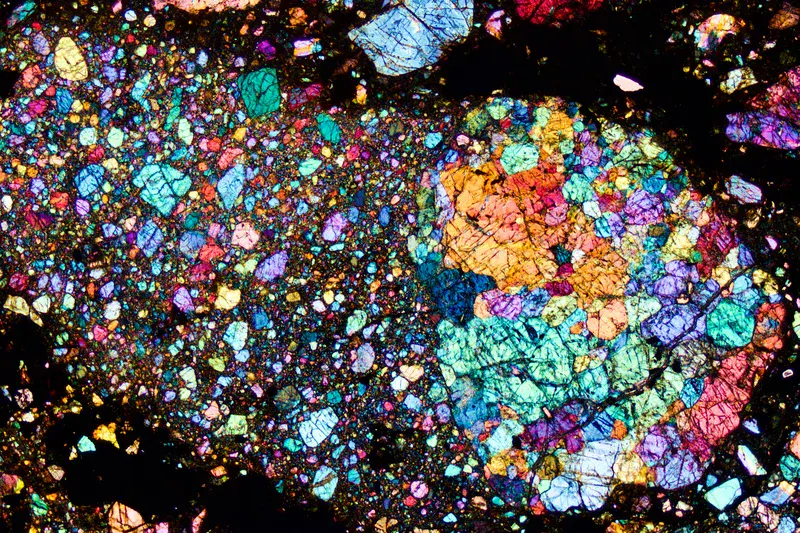
The Comet (in a shocked meteorite)
by Bernardo Cesare, Department of Geosciences, University of Padova, Padova, Italy
This isn’t a terrestrial rock, but a meteorite, kindly provided by the Museo di Scienze Planetarie della Provincia di Prato – Parsec, Italy, for a photomicrographic reportage. Meteorites are fundamental for understanding the origin of our planet. In particular chondritic meteorites (chondrites) are the most common type that falls to Earth, and are also among the oldest known material in the solar system, dated at 4,56 billion years ago.
Chondrites take their name by the abundance of spherical particles, the chondrules, which were small bubbles of molten rock. These bubbles solidified crystallizing in various ways, giving rise to the different textures that can be observed in chondrules. In addition, meteorites underwent a long and complex history, often characterized by impacts at extreme velocities.
Here we cleary see the effects of such an impact, that fragmented a chondrule – partly preserved on the right-hand side – in a myriad of crystals that resemble the tail of a microscopic comet.
Width of view: 5,3 mm.
Categories
Location
Tags
Colours
Image properties
3000 × 2000 px;
image/jpeg; 10.4 MB
Camera:
Nikon D5500
Software: Apple Foto
Submitted on 19 March 2024
Licence
Creative Commons Attribution-NonCommercial-NoDerivs 3.0 Unported (CC BY-NC-ND 3.0)
Credit
Bernardo Cesare (distributed via imaggeo.egu.eu)
Share
Appreciate
Report